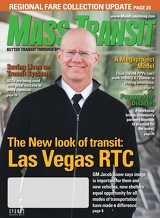Mass Transit magazine features agency profiles, industry trends, management tips and new product information.
Page 29 of 39
TRAINING
with the idea of moving community residents away from the hazardous area. T is can be done through the use of building codes, or property zoning regulations away from fl ood plains as well as, at times, property acquisitions.
NIMS AND ICS T e National Incident Management
System (NIMS) was fi rst conceived by
the California Division of Forestry when responding to wildfi res in southern Cal- ifornia in the 1970s. It was initially cre- ated to establish consistent, standard terminology and to effi ciently manage the expansion of wildfi re incidents. Over the years, fi re service agencies throughout the country have adopted the use of the incident command sys- tem and have used it and trained with it.
More recently, the fi rst secretary of
Homeland Security, Tom Ridge, de- fi ned NIMS this way: "… a consistent nationwide approach for federal, state, tribal and local governments to work eff ectively and effi ciently together, to prepare for, prevent, respond to, and recover from domestic incidents, re- gardless of cause, size or complexity." In 2003 Homeland Security Presiden- tial Directive (HSPD-5) mandated the use of NIMS by all responding agencies. HSPD-5 also required the develop- ment of a National Response Plan (now called National Response Framework). Participants in the "Connecting
Communities" workshop review the fundamental principles of NIMS and the Incident Command System (ICS). T ese principles show that direct, eff ective command and control are essential at every type of incident. T e key to success is to have a coordi- nated incident command structure in which all of the players integrate their resources to address the problem in a safe and eff ective manner. In simple terms — you need an ICS structure. NIMS is a core set of doctrine, prin-
ciples, terminology and organizational process that ensures eff ective, effi cient and collaborative incident manage- ment at all levels. NIMS also provides a framework for interoperability and compatibility while striking a balance between fl exibility and standardiza- tion. While most of the law enforce- ment, fi re service and emergency par- ticipants in the workshop regularly use and are certifi ed in NIMS, most public transportation providers are not famil- iar with the use of ICS or NIMS. Public transit professionals are cer-
tainly encouraged to go to the FEMA website where they can become certifi ed in ICS 100, 200, 700 and 800. Participants will come away from the workshop with a practical understanding of command structures, including unifi ed command, command and general staff positions, as well as their duties and functions. Most importantly, public transportation pro- viders — who could be a critical element
30 MARCH 2012 www.MassTransitmag.com
M
ASS
T
RANSIT
